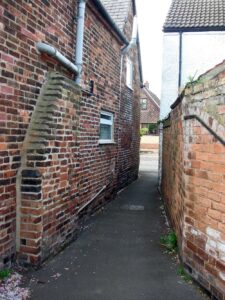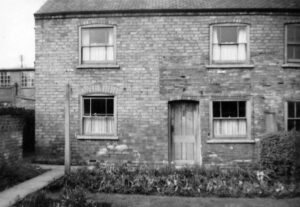Well before the village was built up, long-established footpaths linked farms, mills and other villages. The new houses and factories were built around them, with the paths becoming twitchells (as they are known locally; those who weren’t brought up speakin’ proper might call them alleys). Within the old village there were three twitchells – probably the remains of the medieval street pattern, Top, Middle and Bottom.
Top Twitchell (later called Wilne Avenue) runs from Bothe Hall, and doglegs round the back of the Baptist chapel to Wilne Road.
Middle Twitchell (later called Church Avenue) runs straight from opposite the church gates. A row of three old cottages on the twitchell shared a single outside tap. Downstairs was lit by gas lights; candles were used upstairs. The houses were demolished about 1957 to make way for an expansion to Carters.
Bottom Twitchell runs from the backyard of the White Lion, coming out opposite the WI Hall. Between Middle and Bottom there used to be an engineering works, part of which used to be a lace factory (though probably not much bigger than a cottage) and possibly involved in the stocking trade before that. The building was inspected in 2001 before the Carters site was redeveloped. The 2-storey brick building had a blue clay tiled roof. The ground floor had been heavily altered but there were original wooden framed windows on the first floor.


